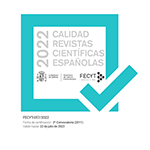Evaluating canopy water content in grasslands using in situ hyperspectral data: A case from the Eastern Mediterranean, Turkey
Abstract
The water content of vegetation is considered a key parameter for ecological analysis as well as for agricultural and forestry applications. Remote sensing methods offer significant advantages over traditional field methods for determining the water content of vegetation at the leaf, canopy, and landscape levels. In this study, the potential of hyperspectral vegetation indices in predicting canopy water content in grasslands was evaluated. For this purpose, data were collected from 3 several grasslands located at ~500 m, ~1200 m and ~1400 m altitudes. 71 samples were collected from each study area, and a total of 213 samples were analyzed. In this context, 59 ratio-based hyperspectral vegetation indices were tested. The relationship between canopy water content and hyperspectral vegetation indices was evaluated with linear, exponential, logarithmic and power regression models. The results showed that the NW-3 (920,970) index significantly represents the canopy water content variable. It was determined that the exponential regression model created with this index was able to explain the variations in canopy water content up to 85%. On the other hand, it has been detected that the high level of water content in the vegetation creates a significant saturation problem. Another finding of this study is that the predictive power reaches higher levels in low canopy water content characteristics. The results of this study show that in situ hyperspectral data has a very high potential in determining vegetation water content in grasslands.
Downloads
Article download
License
Mediterranean Botany is an open access journal to promote global exchange knowledge. It facilitates unrestricted access to its contents from the moment of publication in its electronic edition. The originals published are property of the Universidad Complutense and it is mandatory to cite such source in case of total or partial reproduction. All contents are distributed under a Creative Commons License 4.0 (CC BY 4.0). This circumstance must be expressly stated in this way when necessary. You can check the informative version and legal text of the license.














